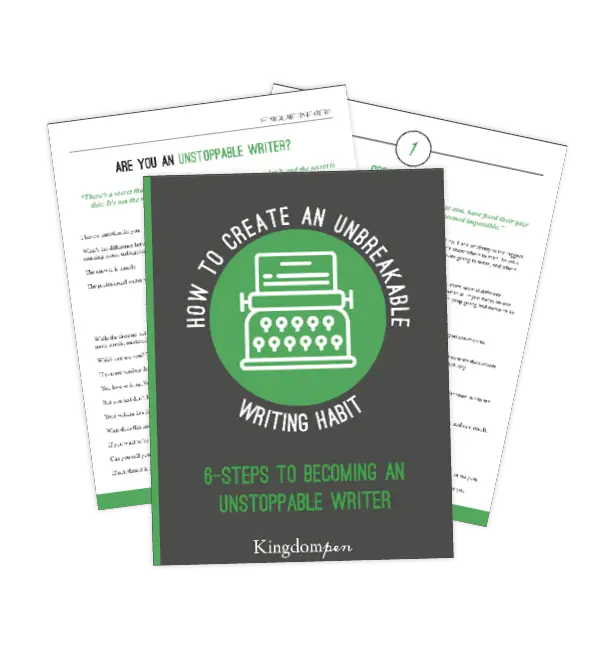By Rachel Leitch
The past one hundred years have been a lot, everybody.
In the span of one hundred years, the bestseller lists went from novels such as The Great Gatsby to The Girl on the Train and back again. Modern fiction has changed so rapidly, it’s almost impossible to see what changed and how it happened.
Or is it?
As travelers of the year 2022, we have the unique privilege to look back at all those decades and compare the titles. See which ones made it big, which ones slept for a while, and which ones faded from everyone’s minds.
And hidden inside those bestseller lists are some secrets that may inspire our own writing.
Most of my lists were taken from this post: https://lithub.com/here-are-the-biggest-fiction-bestsellers-of-the-last-100-years/?single=true. However, other posts with similar lists lined up with this one as well.
Please note: The inclusion of a book’s title here simply means it had a big influence on its time. It is not a recommendation or an indication that I am familiar with the book, and some of the titles here do have serious content concerns.
1920-1929
Some familiar names: The Great Gatsby by F. Scott Fitzgerald, Zane Grey
Let’s start a hundred years ago, which puts us at 1922. While most of the novels from this era were honestly not even on my radar anymore, two did stand out—the two you see above. The Great Gatsby was written about the very era readers lived in, while Zane Grey’s westerns took them back to another time and place.
Not so different from today. Today’s readers are looking both for stories that will root them in reality and give them real-life examples and pictures, but also stories that will help them escape and see a time gone by or a different world.
1930-1939
Some familiar names: Gone With the Wind by Margaret Mitchell, The Hobbit by J.R.R. Tolkien
One thing I noticed while slogging through the 1930’s-1960’s is that the bestsellers and the timeless stories were not necessarily the same.
It was the case with Margaret Mitchell’s novel. She had no problem landing herself on the bestsellers list soon after its release.
But Tolkien’s The Hobbit didn’t even appear on a bestseller list until decades later—and now it is acknowledged as one of the most popular books of all time.
Even if a book doesn’t sell millions, it may have a bigger impact than anyone realizes. That impact may result in a comeback years later or over time, like The Hobbit, or it may never take off. But if your book serves one person, that’s enough. That makes it timeless.
1940-1949
Some familiar names: And Then There Were None by Agatha Christie, The Little Prince by Antoine de Saint-Exupéry
A murder mystery and a children’s story. I struggled with this section. What in the world do these two have to do with each other?
Perhaps it’s just that they both appealed to something people love. It’s easy to worry that our stories aren’t interesting enough. We may even think, “Who will pick up a book with this on the back cover?”
Well, you would, right? That means someone else out there would, too. Writing is not about writing what people will buy but writing what you love and finding others who do too.
1950-1959
Some familiar names: Diary of Anne Frank, The Lord of the Rings by J. R. R. Tolkien, The Lion, the Witch, and the Wardrobe by C. S. Lewis
Ah, finally seeing some novels you really know? The fifties were clearly the rise of fantasy as we know it.
Perhaps it was because readers had just come through the Second World War. They were looking to process it—as with the Diary of Anne Frank—but they also wanted an escape. They wanted their whimsy back.
No matter what genre you write, a sense of child-like imagination will open endless possibilities. Your book will travel places you would have never dreamed. More importantly, so will your reader.
1960-1969
Some familiar names: To Kill a Mockingbird by Harper Lee, Christy by Catharine Marshall
The trend of Diary of Anne Frank continued with To Kill a Mockingbird. Writers were awakened to important issues in their culture and included them in their writing. While writers had done this for decades, this is the first time cultural issues brush so close to things we still experience today.
If you’re addressing a seemingly modern issue in your novel, pull the layer back. Why are people really talking about racism? Why are people really talking about LGBT controversies? Why are people really talking about this scandal or that scandal? What about these situations grabs the hearts of people? Write about the bottom layer.
1970-1979
Some familiar names: The Simirillion by J.R.R. Tolkien and Christopher Tolkien
Not many familiar titles came out of the seventies, which was very curious. However, it was the year The Simirillion released, proving people were still caught up in stories from decades ago. Timeless stories just don’t die.
1980-1989
Some familiar names: Return of the Jedi, E.T, The Movie Storybook, The Butter Battle Book by Dr. Suess, Jubal Sackett by Louis L’Amour, It by Stephen King, Jaws,
Scarlett by Alexandra Ripley
The eighties were the years of blockbuster movies! And therefore, many of the top-selling books were novels and movie storybooks based off of them (such as Star Wars, E.T., and Jaws above).
In keeping with the blockbuster spirit, you can see the ambitious sequel to Gone With the Wind in that line-up too.
But that wasn’t the only thing that came out of the eighties. Though he and his genre had been lurking around before, these were the years when Stephen King emerged. His novels largely created the idea of entertainment for the sole purposes of being scared. (Also known as horror.)
Whether or not you’re a horror person, this development paved the way for edgier books to hit the markets in the coming years. His domination of the market also paved the way for other writing superstars to make their appearance in the decade to come.
This seems to be the first decade where general market stories and Christian stories split entirely. While every story has a worldview or a theme, many earlier decades’ stories wove the two together. Christian market became a thing.
What’s this all mean to us? Life is edgy. While the edge you include in your story may differ largely based on your life experiences and the genre you’re writing, it’s okay to poke the dark, scary places of life—and then defeat whatever emerges.
1990-1999
Some familiar names: John Grisham, James Patterson, Nicholas Sparks, Star Wars, Left Behind by Jerry Jenkins and Tim LaHaye, Harry Potter by J. K. Rowling
John Grisham. James Patterson. Nicholas Sparks. Left Behind. Harry Potter.
The nineties! The era of legends!
Many of the authors that emerged in the nineties would dominate the market well into the 2000’s. While prolific authors had certainly been a thing before (Agatha Christie and Zane Grey come to mind), this is the first time I saw authors having a book on the bestseller list for ten plus years in a row.
But here’s the thing—for most of them, this wasn’t the first time they’d been published. These authors put in the consistent effort to put out books. And when they reached the bestseller lists, they didn’t quit. They kept writing, working hard, doing their best.
The writer who is faithful will be faithful in much. What that “much” may be will differ from person to person, but expect God to reward your efforts to use your gifts to the best of your ability.
2000-2009
Some familiar names: The Da Vinci Code by Dan Brown, The Lovely Bones by Alice Seobold
As I mentioned before, the market continued to be dominated by “big names.” But two of the best known books from this decade were not. Even though I’m unfamiliar with these books, I at least know what they are and who wrote them. But I can’t tell you any other books by either of them.
Some of the biggest novels proved to come from the underdogs. And as a new generation rose up, the way was paved for new authors to rise.
If you feel like there’s no way to break into the market, remember it’s just that—a feeling. If you’ve been called to write, there’s a place for you and your story.
2010-2019
Some familiar titles: The Help by Kathryn Stockett, The Girl on the Train by Paula Hawkins, Before We Were Yours by Lisa Wingate
And rise they did. The 2010’s have been an explosion of new authors. In 2021, 269 authors debuted novels in adult fiction. That’s not counting young adult, nonfiction, and children’s fiction.
Some of them (such as Paula Hawkins) strike it big on their first novel. Others plug away for years before they see the light of day.
Something else interesting that pops up in the 2010’s is the revival of classics. Out of nowhere, books such as The Great Gatsby and Gone With the Wind return to the bestselling list. People are beginning to realize how timeless these stories are and are dying to see those qualities return to current fiction.
Did you notice something else about that list of titles? Yeah. Before We Were Yours by Lisa Wingate made the list.
Lisa Wingate is a Christian author. The 2010’s are the decade where Christian publishing really got their head in the game. They’re not content to just pump out clean, but cheesy novels.
They’re going after quality work that would hold its own against current bestsellers. They’re going after crossover markets and expanding their influence. They’re rediscovering what makes the classics classic.
The world is waiting for the next timeless story.
They’re waiting for you.
Bestsellers may sell lots of copies, sure. But the truly bestselling books are the ones that make a reader fall into the story and climb back out changed.
What will your bestseller be?
Rachel Leitch
Rachel Leitch discovered the book of writing when she was seven. She’s been turning pages ever since! When she’s not hidden away penning young adult historical adventures, she’s trying to fit all her reads on her shelf in a somewhat organized manner, rambling through history, daydreaming at the piano, or teaching students to be just as bookish as she is. In all her adventures, she learns how to shine brighter for the Father of Lights.
For more lessons drawn from books and movies and other stories (and to receive a free digital short story), follow her adventure journal at https://racheljleitch.weebly.com!



I absolutely loved this post! So unique and insightful (and naturally, the marketer in me is inspired to do an in-depth analysis of market changes *shakes head*)! Thank you for sharing, Rachel! 😀
You are very welcome! I’m glad you enjoyed it. (That analysis could be very interesting.)
Cool analysis!
Thank you!
It’s so fun seeing the top selling books of each decade. Also, I love your bit of commentary on each one! It’s really insightful and gets me thinking about how the market has evolved over the past hundred years. It’s honestly a really interesting topic that I may have to delve deeper into after being inspired by this article!
I’m so glad you enjoyed this! It was a very interesting article to research and write.
These are some fascinating insights! Thanks for sharing!
I will say though, that Brandon Sanderson is a diamond in the rough.
I personally like your post, you have shared good article. It will help me in great deal.
不知道说啥,开心快乐每一天吧!